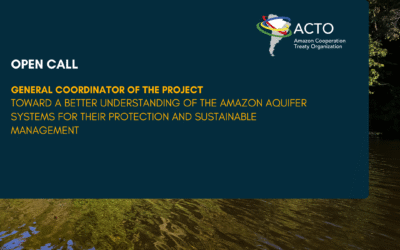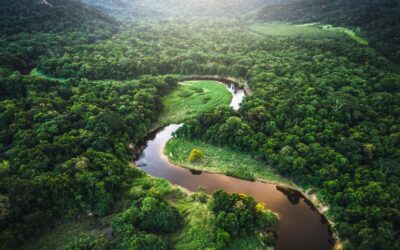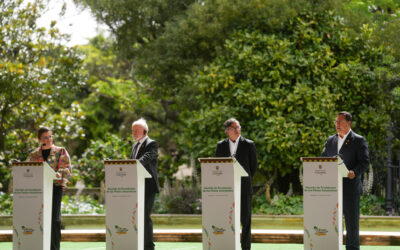The team will go to the eight ACTO Member Countries this first semester to hold workshops on the Project and the Amazon Regional Observatory, in addition to field visits.
Ecuador was the first Amazonian country to receive, in April, a visit from the Bioamazon Project team for work agendas and field visits with the objective of learning about activities supported by the Project. The first day was dedicated to the presentation of the Amazon Regional Observatory (ARO), held in the Los Próceres room of the Ministry of Foreign Affairs, in Quito, Ecuador.
The opening ceremony was attended by the Ministers of Foreign Affairs of Ecuador, Juan Carlos Holguín, Environment, Water and Ecological Transition, Oscar Rojas, the Head of Cooperation at the German Embassy in the country, Barbara Schulz-Hönerhoff, the Coordinator of the ARO and the Bioamazon Project, Mauro Ruffino, as well as representatives of diplomatic missions accredited in Ecuador. Then, technical workshops were held on the modules, available resources and the progress and status of data collection for the ARO, in addition to presenting the tools and procedures to integrate data into the Observatory.
Juan Carlos Holguín, Minister of Foreign Affairs and Human Mobility, said that Ecuador “positively values the work of the Amazon Cooperation Treaty Organization, a fundamental space to promote cooperation, dialogue and programs of interest to the Amazon Region”.
The Minister of the Environment, Water and Ecological Transition, Oscar Rojas, highlighted the responsibility of generating public policies that strengthen the management of wildlife and technological tools to facilitate its management, given that information on biodiversity is very important to take actions and decisions on conservation strategies, especially at a time when extinction rates are increasing dramatically.
“We know that the need for information on biodiversity is critical in megadiverse countries like Ecuador. In this sense, the Bioamazon Project promoted a conceptual and operational study for the development, improvement and strengthening of the information systems of the Member Countries and for management related to biodiversity and the International Convention on Trade in Endangered Species of Wild Fauna and Flora (CITES)”, said Rojas.
Barbara Schulz, representing the German Embassy in Ecuador, mentioned that the Amazon Regional Observatory is a milestone in the history of the Amazon Cooperation Treaty Organization (ACTO). “Through the harmonization of databases and the possibilities of comparative data analysis, the Amazon Regional Observatory is an important instrument for the formulation, monitoring and evaluation of policies and will assist in the conservation of threatened species and will contribute to a better management of natural resources,” Schulz said.
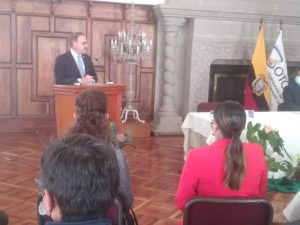
Presentation ceremony of the Amazon Regional Observatory (ARO)
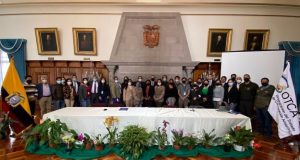
Workshop on the Amazon Regional Observatory
Equipment
Another activity in Quito was the formalization of the section for the use and donation of equipment to the Ministry of the Environment, Water and Ecological Transition of Ecuador (MAATE). Through the Bioamazon Project, equipment in the total amount of U$D 123,224.21 was acquired to improve the technological infrastructure of the ministry and its technical workshops, such as desktop and laptop computers, monitors, projectors, GPS, rechargeable batteries, among other items.
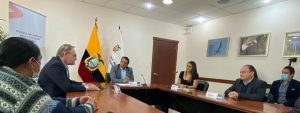
Technical meeting with the Minister of the Environment of Ecuador and the MAATE team
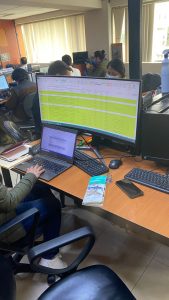
Equipment acquired by the Bioamazon Project to monitor biodiversity.
Orchid Route
MAATE, with the support of the Bioamazon Project, is developing a strategy to implement the Orchid Route to support the sustainable socioeconomic development of orchid-producing families in the Ecuadorian Amazon region.
The Bioamazon Project team had the opportunity to visit orchards that are part of this route. In the “Paraíso Escondido” nursery, in Checa, about 2400 plants belonging to 120 wild species of orchids are registered. Owner Juan Galarza, along with his daughters, has been caring for orchids for over 20 years. The main objective of this nursery is ex situ conservation for scientific research purposes.
Three orchid nurseries were also visited in the province of Napo -Kinde del Barranco, Lluvia de Oro and Cuna de Venus, which have authorization for the management and conservation of orchids and which will be part of the Orchid Route.
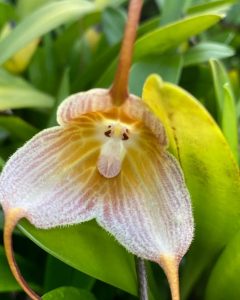
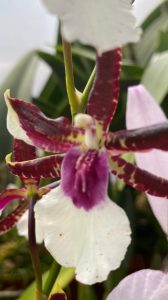
In Gualaceo, the first company in Ecuador that obtained licenses for the export of plants under the CITES Convention was visited. Ecuagenera is a true sanctuary with 4,200 varieties of orchids, dedicated to the conservation and reproduction of these species since 1992. The experience of its owner, the investment in technology and infrastructure and the highly qualified team have positioned the company as the most successful experience in management and orchid reproduction in Ecuador and in the world, both in ex situ conservation and in situ conditions, also has the technical capacity to create new hybrid species, with greater commercialization possibilities.
In Tena, the delegation from the Bioamazon Project/ACTO and MAATE was received by the community of Kallari, which is dedicated to the cultivation and management of an orchid species that produces vanilla. Here, the cultivation and use of added value is carried out by the community as a whole (300 families) and organized by the Kallari Association, exporting various by-products to Germany and Switzerland.
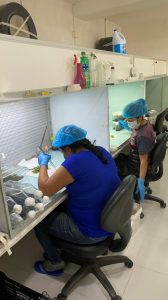
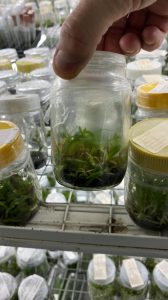
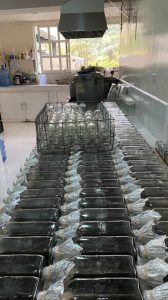
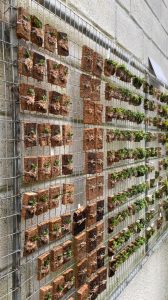
Laboratory of Ecuagenera in the process of in situ reproduction of orchid species.
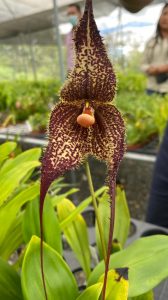
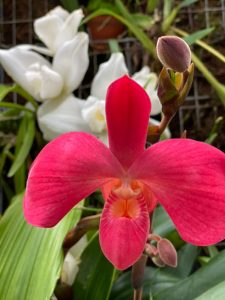
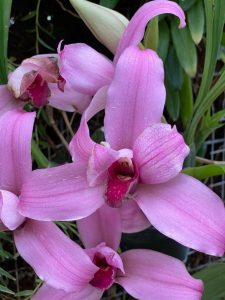
Illustrative photos of orchids produced by the Ecuogenera Company
In the Province of Napo, canton of Chaco, the Botanical Garden “La Hormiga”, by Edwin Ango, and the orchidarium “Paraíso de las Orquídeas” owned by Marco Chuquimarca were visited.
Likewise, the Botanical Garden “Quinde del Barranco”, by Ruth Hidalgo, was visited. A tour of the natural trails was made where wild orchids can be observed, the same that were cataloged and inventoried by their custodian Mrs. Ruth.
The Ruth Hidalgo Botanical Garden carries out conservation activities for orchid species typical of the region, the plants that are kept in these places were collected from anthropic activities, today they are kept in these collections that serve as a repository of genetic material of endemic species of the place.
In the “Las Palmas” Botanical Garden, located in the Canton Cosanga, in this environment of ex situ conservation and management, hybrid orchid species are protected and have the proper evidence that allows identifying the traceability of the species from its origin to its destination, in this case, the Botanical Garden.
Finally, we visited Kallary, a community company formed by several Quichua families, the same ones responsible for and involved in the sustainable use and exploitation of vanilla (Vainilla sp.). This species is cultivated on farms in the region through a systematic process that involves from stratification, fertilization and harvesting of vanilla pods.
Subsequently, post-harvest activities are carried out at the treatment station where the pods undergo a process of dehydration, fermentation, and quality control of the pods. After rigorous quality control, the product is packaged for national and international distribution.
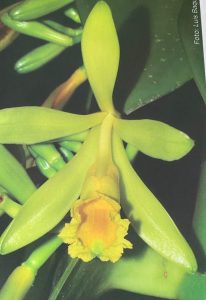
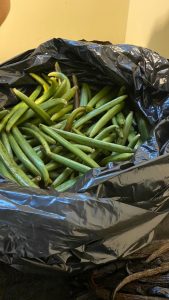
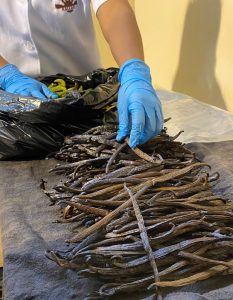
Vainilla sp, cultivated and processed by several Quichua families.
Mauro Ruffino, coordinator of the Bioamazon Project, positively evaluates the work agenda in Ecuador. “In those days, it was possible to observe three scales of bioeconomy undertakings associated with orchid conservation. From management and conservation initiatives by individual small-scale orchids that will be part of the Orchids Route associated with tourism, as well as a system of association of management and community production of species that give rise to vanilla that after processing is exported, to the Company Ecuagenera with 30 years of experience in the production of orchids on an industrial scale for export and which also associate ecotourism ventures”, he concluded.
Published in Bioamazon Newsletter, edition n. 14, March-April 2022
========================================================================









